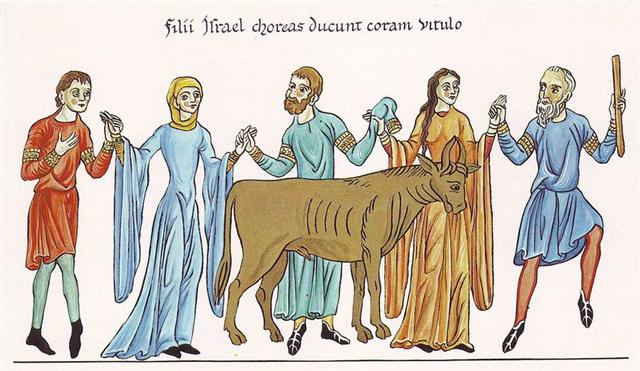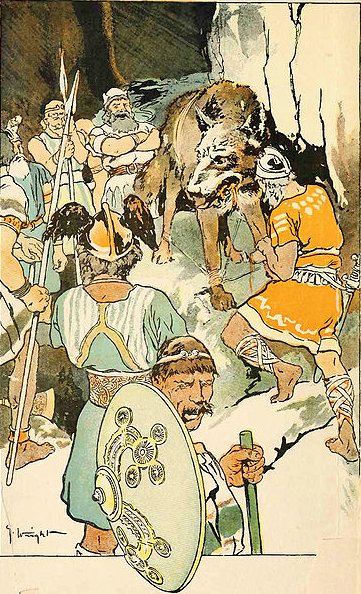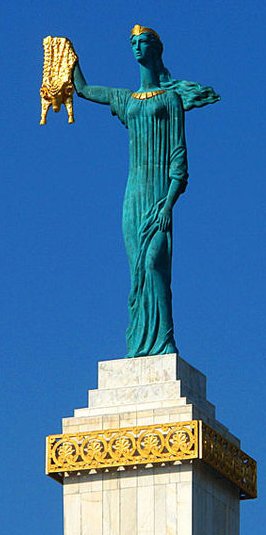The cosmic importance of Aries could have been a later invention. A ram is not only a quadruped but also a mechanism in running water: "A hydraulic ram, or hydram, is a cyclic water pump powered by hydropower. It takes in water at one 'hydraulic head' (pressure) and flow rate, and outputs water at a higher hydraulic head and lower flow rate. The device uses the water hammer effect to develop pressure that allows a portion of the input water that powers the pump to be lifted to a point higher than where the water originally started. The hydraulic ram is sometimes used in remote areas, where there is both a source of low-head hydropower and a need for pumping water to a destination higher in elevation than the source. In this situation, the ram is often useful, since it requires no outside source of power other than the kinetic energy of flowing water." (Wikipedia) In Swedish the hydram is Vädur, which also means a male sheep and Aries.
When Moses was enraged by the worship of 'the Golden Calf' it probably was because he thought the time to change the structure was long overdue:
The Adoration of the Golden Calf - a picture from the Hortus deliciarum of Herrad of Landsberg (12th century). Source: Wikipedia. Notice how the central man does not show his left hand. I guess it could mean the Sun at Taurus was personified by Mars (Týr):
Moses was too successful because 'the First Point of Aries' stuck too firmly in the minds of common people - Wikipedia still refers to this position as 0h. But the proper time for 'the Golden Fleece' was much earlier:
If a rongorongo text was intended to document the positions of the important stars, then the natural pattern to use ought to have been the ancient map with Taurus and Aldebaran on one side of the sky and with the Scorpion and Antares at the opposite side.
The first 3 Tahitian star pillars appear to belong together in a group, with Aldebaran marking the dark underworld 'place for tattooing'. However, south of the equator May 28 was not in spring but equivalent to a day in late November.
| |||||||||||||||||||||||||||||||||||||||||||||||||||






